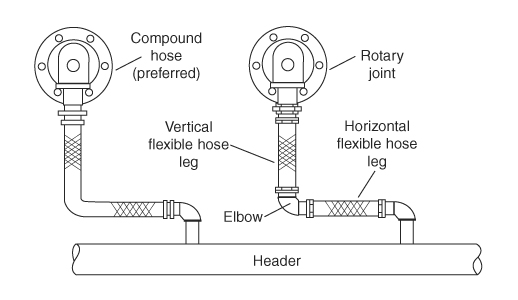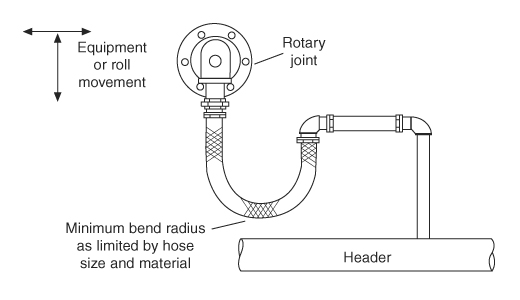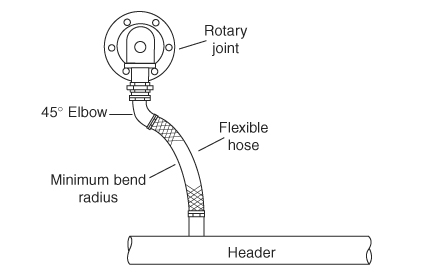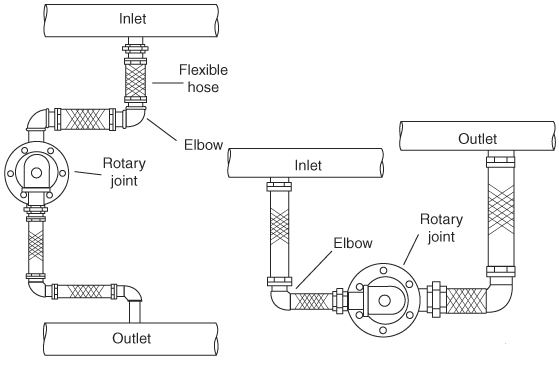Recommended Rotary Joint & Rotary Union Piping
Flexible metal hose is used on the inlet and outlet connections of rotary joints and rotary unions to allow for the rotary joint movement and for thermal expansion of piping.
Improper piping can lead to excessive force exerted on the joint body, excessive guide wear with self-supported rotary joints, deflection of the support rods with rod-supported rotary joints, and broken fasteners in the nipple flange and journal flange.
Examples of flexible hose installations:

The vertical piece of hose allows for header expansion and misalignment of header connection relative to rotary joint connection. The horizontal leg of flexible hose allows for thermal and hydraulic expansion of vertical hose leg without exerting large forces on rotary joint or rotating union.

This method provides flexibility of hose length, piping and roll movement vertical or horizontal. Generally the hose must be much longer than needed for Figure 1 due to the minimum bend radius allowable, which is dependent on size and material of hose and amount of equipment movement.

An example of using a single piece of hose which requires sufficient hose length to stay within the minimum bend radius of the specified hose size and material. This arrangement minimizes hydraulic loads developed by the hose caused from length and space tolerance.
Recommended dual-flow arrangements.

